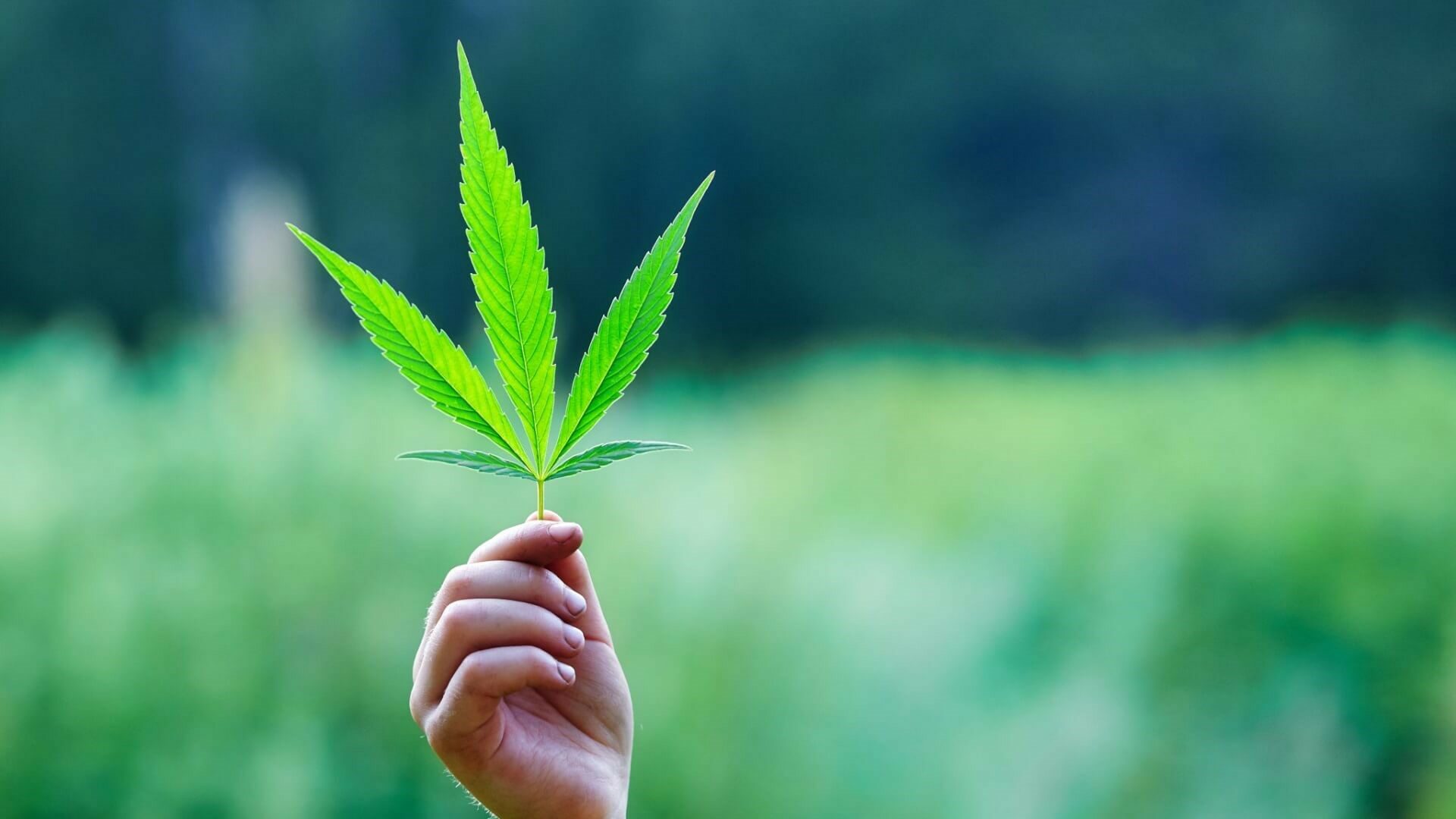Traditional Yoga Styles
This ancient practice originated in India over 5,000 years ago as a way to unite the body, mind, and spirit through physical postures, breathing techniques, and meditation.
Traditional yoga styles have evolved over time, incorporating various philosophical and spiritual perspectives to create a holistic approach to well-being.
The six traditional schools of yoga are Hatha Yoga, Raja Yoga, Bhakti Yoga, Jnana Yoga, Karma Yoga, and Tantric Yoga, each with its unique focus and methodology.
Hatha Yoga is the most widely practiced style, emphasizing physical postures (asanas) and breathing techniques (pranayama) to balance the body’s energy.
Raja Yoga, also known as Ashtanga Yoga, is a more intense style that focuses on the eight limbs of yoga, including the yamas (ethics), niyamas (self-discipline), asanas, pranayama, and meditation.
Bhakti Yoga is a devotional style that emphasizes love and devotion to a higher power through chanting, singing, and meditation.
Jnana Yoga is a more introspective style that focuses on self-inquiry and philosophical study to attain spiritual enlightenment.
Karma Yoga is a selfless style that involves performing yoga postures for the benefit of others, cultivating compassion and service.
Tantric Yoga is a more sensual and symbolic style that incorporates elements of mythology, ritual, and meditation to achieve union with the divine.
These traditional styles have evolved over time, influencing contemporary yoga practices and fusions.
Many modern yoga teachers blend elements from multiple styles to create innovative and dynamic practices that cater to diverse needs and preferences.
This blending of styles has led to the creation of unique fusion practices such as Vinyasa Flow, Ashtanga Vinyasa, and Power Yoga.
A key aspect of traditional yoga is the concept of ” Ahimsa,” or non-violence, which extends beyond physical postures to encompass a compassionate and respectful approach to teaching and practicing yoga.
As we move forward in our yoga journey, it’s essential to honor these ancient traditions while also embracing innovation and creativity to create meaningful connections with ourselves and others.
The richness of traditional yoga styles offers endless possibilities for exploration and growth, allowing us to deepen our understanding of the human experience and our place within the world.
The world of yoga is vast and diverse, with various styles that cater to different needs and preferences. One of the most popular traditional yoga styles is Hatha Yoga, which originated in India over 2,000 years ago. This style emphasizes physical postures (asanas) and breathing techniques (pranayama) to balance the body’s energy.
Another well-known traditional yoga style is Vinyasa Yoga, also known as flow yoga. This style involves synchronizing breath with movement, flowing from one pose to another in a continuous sequence.
• Ashtanga Yoga is a fast-paced and physically demanding style that involves a set sequence of postures. It is designed to build internal heat and purify the body.
Iyengar Yoga, on the other hand, emphasizes precise alignment and the use of props to support the body in various yoga poses.
Kundalini Yoga focuses on the release of energy through postures, breathing techniques, and meditation. It aims to awaken the kundalini energy (a supposed spiritual energy that lies dormant at the base of the spine).
• Bhakti Yoga is a more devotional style, focusing on the connection between the individual self and the divine. It often involves chanting, singing, and meditation.
Sivananda Yoga is another traditional style that emphasizes the Five Points of Yoga: proper exercise, proper breathing, proper relaxation, proper diet, and positive thinking and meditation.
• Kripalu Yoga focuses on compassionate and intuitive teaching methods, emphasizing the importance of listening to the body’s inner wisdom.
A study by the University of California, Los Angeles (UCLA) found that yoga practitioners experience a decrease in cortisol levels, blood pressure, and heart rate after practicing various yoga poses. This suggests that regular yoga practice can have a positive impact on both physical and mental health.
These traditional styles are not only beneficial for physical health but also offer a range of spiritual and emotional benefits. Whether you’re looking to reduce stress, improve flexibility, or deepen your connection with yourself and others, there’s a traditional yoga style out there for you.
Traditional yoga styles have been practiced for centuries, and while they share some similarities, each style has its unique focus and benefits.
The Athleta lifestyle brand, in collaboration with the American Council on Exercise (ACE), recommends a variety of traditional yoga styles that can help improve flexibility, strength, and balance.
Among the recommended styles is Vinyasa Flow, which involves synchronizing breath with movement and flowing through a series of poses. This style is known for its dynamic and flowing sequences, making it an excellent choice for those looking to improve cardiovascular fitness and flexibility.
Ashtanga, a fast-paced and physically demanding practice that involves a set sequence of poses. Ashtanga is designed to build internal heat, strength, and endurance, making it an excellent choice for those looking to challenge themselves and improve their overall physical fitness.
Hatha yoga is another recommended style, which focuses on Yin and Praṇayama practices. Hatha involves holding postures for extended periods of time to build internal heat and flexibility, while Praṇayama involves the practice of controlled breathing techniques to calm the mind and balance the nervous system.
These traditional yoga styles are not only excellent choices for improving physical fitness, but they also offer a range of mental and emotional benefits. By incorporating these styles into your routine, you can expect to experience reduced stress and anxiety, improved mood, and increased overall sense of well-being.
It’s worth noting that each style has its unique focus and benefits, so it’s essential to experiment with different styles to find what works best for you. Some people may prefer the dynamic flow of Vinyasa Flow, while others may enjoy the challenging sequences of Ashtanga or the meditative practice of Hatha.
Incorporating traditional yoga styles into your routine can also help you develop greater body awareness and flexibility, allowing you to move with greater ease and efficiency in daily life. By combining these physical benefits with the mental and emotional benefits of yoga, you can experience a more holistic approach to health and wellness.
Dynamic and Strength-Building Poses
The art of yoga is not just about holding still poses for extended periods, but also about engaging multiple muscle groups and building strength through dynamic movements.
A key component of dynamic and strength-building poses is the integration of movement and breath. This can be achieved by adding subtle transitions between holds, using props to enhance balance and stability, or incorporating flowing sequences that link various postures together.
One such pose that exemplifies this approach is the Peacock Pose (Mayurasana), where the legs are lifted up towards the hips and the body forms an inverted V-shape. To build strength in the arms, shoulders, and core, it’s essential to engage the muscles of these areas throughout the hold.

To modify this pose for greater accessibility, practitioners can use blocks or straps under their hands or feet to reduce the pressure on the joints. This will allow them to focus on maintaining proper alignment and engaging their core muscles without compromising their safety.

The Crow Pose (Bakasana) is another dynamic and strength-building pose that challenges the entire body. By balancing on the hands, it engages the arms, shoulders, and back muscles, while the legs are lifted up towards the hips, targeting the core and glutes.
As with Mayurasana, Crow Pose can be modified to suit individual needs by using blocks or straps to support the hands or feet. This will enable practitioners to concentrate on maintaining their balance and engaging their core muscles without risking injury.
The Shoulder Stand (Viparita Karani) is a pose that leverages gravity to build strength in the shoulders, arms, and core. By lifting the legs up towards the ceiling, it engages the muscles of the lower back and glutes, creating a harmonious flow of movement throughout the entire body.
One way to add an extra layer of challenge to this pose is by using a strap or block under the shoulders to deepen the stretch in the chest and shoulders. This will require more strength and control from the practitioner, making it an excellent option for those looking to build their upper-body power.
The Handstand Against a Wall (Adho Mukha Vrksasana) is a dynamic and strength-building pose that requires balance, control, and core engagement. By placing the hands against a wall and lifting the body up into a handstand, practitioners can challenge their entire body, from the shoulders to the heels.
To modify this pose for greater accessibility, individuals can use blocks or straps under the hands to reduce the pressure on the joints. This will allow them to focus on maintaining proper alignment and engaging their core muscles without compromising their safety.
The Scorpion Pose (Vrschikasana) is a dynamic and strength-building pose that targets the arms, shoulders, and core muscles. By lifting the legs up towards the ceiling and arching the back, practitioners can engage their entire body, from the fingers to the heels.
To add an extra layer of challenge to this pose, individuals can use blocks or straps under the hands or feet to deepen the stretch in the shoulders and hips. This will require more strength and control from the practitioner, making it an excellent option for those looking to build their upper-body power and core endurance.
The Headstand (Sirsasana) is a fundamental pose that builds strength and control throughout the entire body. By balancing on the hands and lifting the legs up towards the ceiling, practitioners can engage their arms, shoulders, and back muscles, while also challenging their core and glutes.
One way to add an extra layer of challenge to this pose is by using a strap or block under the feet to deepen the stretch in the hamstrings and calves. This will require more strength and control from the practitioner, making it an excellent option for those looking to build their lower-body power and balance.
By incorporating these dynamic and strength-building poses into their practice, individuals can enhance their overall physical fitness, build strength, and deepen their understanding of the interconnectedness of the body’s various systems.
Dynamic and strength-building poses have been gaining popularity in recent years, particularly among yogis looking to enhance their physical fitness. These poses are designed to challenge the body’s strength and endurance while also improving flexibility and balance.
A study published in the Journal of Strength and Conditioning Research suggests that dynamic yoga poses can improve muscular power and endurance. This is likely due to the fact that these poses involve movement and fluid transitions between different positions, which stimulates the muscles and cardiovascular system.
Some examples of dynamic and strength-building poses include:
-
The Eagle Pose (Garudasana): This pose requires strength, balance, and flexibility as it involves wrapping the legs around each other while standing. It also engages the core muscles and improves focus and concentration.
-
The Crow Pose (Bakasana): In this pose, one balances on their hands and toes, engaging the arms, shoulders, and back muscles. It also improves balance, flexibility, and strength in the legs and ankles.
-
The Side Plank Pose (Vasisthasana): This pose strengthens the arm and shoulder muscles while improving core strength and stability. It also enhances focus, balance, and overall physical fitness.
-
The Downward-Facing Dog (Adho Mukha Svanasana) with a dynamic twist: Instead of holding the traditional Downward-Facing Dog pose for a few breaths, try adding a twist by shifting your weight onto one hand or one leg. This adds an extra challenge to the pose and engages the core muscles.
-
The Plank Pose (Phalakasana) with alternating arm raises: Start in the traditional Plank Pose position, then raise one arm up towards the ceiling while keeping the other arm on the ground. Hold for a few breaths before switching arms and repeating the sequence. This variation adds strength, balance, and endurance to the pose.
-
The Warrior Pose (Virabhadrasana) with leg lifts: In this variation of the traditional Warrior Pose, lift one leg off the ground while keeping the other foot planted firmly on the earth. Hold for a few breaths before switching legs and repeating the sequence. This adds strength, balance, and flexibility to the pose.
-
The Tree Pose (Vrksasana) with ankle circles: In this variation of the traditional Tree Pose, stand on one leg while keeping the other foot resting against your inner thigh. Use a circular motion to move your ankles around each other for several repetitions. This adds strength, balance, and flexibility to the pose.
-
The Boat Pose (Paripurna Navasana): In this dynamic pose, engage your core muscles by drawing your navel towards your spine while sitting on your seat bones. Lift one leg off the ground and keep it straight, then slowly lower it back down without touching the floor. Repeat with the other leg to add strength, balance, and endurance.
By incorporating these dynamic and strength-building poses into your yoga practice, you can challenge yourself physically while also improving flexibility, balance, and focus. Just remember to listen to your body and modify or come out of the pose if you experience any discomfort or pain.
Further research is needed to fully understand the benefits of dynamic and strength-building poses on the human body. However, it’s clear that these poses offer a unique combination of physical challenges and mental focus, making them an excellent addition to any yoga practice.
The concept of strength-building poses has gained significant attention in recent years, and for good reason. These poses are not only effective in improving flexibility and balance but also in building core strength, stability, and overall athletic ability.
The National Academy of Sports Medicine (NASM) recommends incorporating strength-building poses like warrior, triangle, and side plank into a workout routine. By doing so, individuals can improve their functional strength, which is essential for everyday activities as well as athletic performance.
Warrior Pose (Virabhadrasana) is one such pose that targets the legs, hips, and core muscles. It requires balance, flexibility, and strength in the ankles, calves, thighs, and glutes. To practice warrior pose, start on all fours with your hands shoulder-width apart and your knees directly under your hips. Step one foot forward and turn it slightly inward, keeping your heel grounded. Extend your arms out to the sides, parallel to the ground, and engage your core muscles to maintain balance.
Triangle Pose (Trikonasana) is another pose that targets the legs, hips, and core muscles. It requires flexibility, balance, and strength in the ankles, calves, thighs, and glutes. To practice triangle pose, start on all fours with your hands shoulder-width apart and your knees directly under your hips. Step one foot forward and extend it out to the side, keeping your heel grounded. Reach your top hand towards the ground, parallel to the other leg, and engage your core muscles to maintain balance.
Side Plank Pose (Vasisthasana) is a strength-building pose that targets the core muscles, particularly the abs and obliques. It requires stability, control, and strength in the arms, shoulders, and torso. To practice side plank pose, start on your side with your feet stacked and your hands under your shoulders. Lift your hips off the ground and balance on your forearm and the side of your foot, engaging your core muscles to support your body.

Other strength-building poses that can be incorporated into a workout routine include:
- Plank Pose (Phalakasana): Targets the core muscles, particularly the abs and obliques. Requires stability, control, and strength in the arms, shoulders, and torso.
- Cobra Pose (Bhujangasana): Targets the chest and shoulder muscles, as well as the triceps and shoulders. Requires flexibility and strength in the upper back and core muscles.
- Tree Pose (Vrksasana): Targets the ankles, calves, and legs, as well as the balance and focus of the practitioner. Requires flexibility, balance, and strength in the hips and core muscles.
- Pigeon Pose (Eka Pada Rajakapotasana): Targets the hips and glutes, as well as the quads and hamstrings. Requires flexibility, control, and strength in the legs and hips.
By incorporating these strength-building poses into a workout routine, individuals can improve their overall fitness, increase their range of motion, and reduce their risk of injury. It’s essential to remember to listen to your body and modify or come out of the pose if you experience any discomfort or pain.
Restorative and Rejuvenating Poses
Restorative and Rejuvenating Poses are essential for relaxation and stress relief, allowing the body and mind to unwind and rejuvenate after a long day.
In yoga, restorative poses are designed to promote relaxation, reduce muscle tension, and calm the mind.
These poses typically involve supporting the body in a relaxed state, either by using props such as blocks, blankets, or bolsters, or by simply allowing gravity to support the body.
The benefits of restorative yoga include:
- Reducing stress and anxiety by promoting relaxation and calming the nervous system
- Improving sleep quality by releasing tension and calming the mind before bed
- Increasing flexibility and range of motion by stretching the muscles and joints
- Promoting deep relaxation and reducing muscle tension, which can help to alleviate chronic pain and discomfort
- Supporting the immune system by reducing stress and promoting overall well-being
Some examples of restorative poses include:
- Cobra Pose (Bhujangasana): This pose involves lying on the stomach with the chest lifted up and the head in a neutral position, supported by blocks or a bolster under the chest.
- Pigeon Pose (Eka Pada Rajakapotasana): This pose involves lying on one side with the leg bent behind the other, supporting the body with bolsters or blankets to reduce strain on the lower back.
- Child’s Pose (Balasana): This pose involves kneeling and then sitting back onto the heels, stretching the arms out in front of the body and lowering the head to the ground.
- Savasana: This pose, also known as “corpse pose,” involves lying on the back with the arms and legs relaxed and supported by bolsters or blankets to promote deep relaxation and reduce stress.
- Legs Up The Wall Pose (Viparita Karani): This pose involves lying on the back with the legs up against a wall, supporting the body with bolsters or blankets to reduce strain on the lower back and promote relaxation.
Rejuvenating poses are similar to restorative poses but involve more dynamic movements and flows that aim to recharge and revitalize the body and mind.
These poses often incorporate elements of dynamic movement, breathwork, and meditation to promote a sense of renewal and rejuvenation.
The benefits of rejuvenating poses include:
- Promoting energy and vitality by stimulating the circulatory system and increasing oxygen flow
- Improving mood and reducing stress by releasing endorphins and promoting relaxation
- Increasing flexibility and range of motion by flowing through dynamic movements
- Supporting detoxification and elimination processes in the body
- Promoting a sense of renewal and rejuvenation, which can help to improve overall well-being
Some examples of rejuvenating poses include:
- Sun Salutations (Surya Namaskar): This flowing series involves a dynamic sequence of movements that combines breathwork, stretching, and strengthening exercises.
- Warrior Flow: This pose involves standing in warrior II position with the front foot facing forward and the back foot at a 90-degree angle, then flowing into a dynamic movement to stretch and strengthen the legs and hips.
- Tree Pose (Vrksasana): This balance pose involves standing on one leg while engaging the core and stretching the arms out to the sides.
- Downward-Facing Dog (Adho Mukha Svanasana): This pose involves bending forward and extending the arms and legs behind the body, then lifting into a dynamic movement to stretch and strengthen the muscles.
- Cobra Flow: This flowing series involves transitioning from cobra pose to other dynamic movements to stretch and strengthen the chest and shoulders.
By incorporating both restorative and rejuvenating poses into your yoga practice, you can experience a deeper sense of relaxation, reduced stress, and increased energy and vitality.
This will allow you to live more mindfully and in alignment with your body’s needs, leading to overall well-being and happiness.
yoga has been practiced for thousands of years, with its roots in ancient India, and over time it has evolved into a diverse range of styles, each with its own unique benefits and focus.
One aspect of yoga that has gained significant attention in recent years is the practice of restorative and rejuvenating poses. This type of yoga involves using props such as bolsters, blankets, and blocks to support the body in relaxing postures, allowing for deep relaxation, rejuvenation, and restoration.
The benefits of restorative yoga are numerous and well-documented. According to a report by the National Institute of Health (NIH), regular practice of restorative yoga has been shown to reduce inflammation, improve sleep quality, and promote overall physical and mental well-being.
Inflammation is a natural response of the body’s immune system, but chronic inflammation can lead to a range of health problems, including arthritis, diabetes, and cardiovascular disease. Restorative yoga has been shown to reduce cortisol levels, heart rate, and blood pressure, all of which can contribute to reducing inflammation.
Improved sleep is another benefit of restorative yoga. By relaxing the body and calming the mind, restorative yoga can help individuals fall asleep faster, stay asleep longer, and wake up feeling more refreshed and revitalized. This is especially beneficial for individuals who struggle with insomnia or other sleep disorders.

Restorative yoga also promotes overall physical well-being by increasing flexibility, balance, and range of motion. The use of props allows for gentle stretching and lengthening of the muscles, tendons, and ligaments, which can help to reduce pain and stiffness.
In addition to these physical benefits, restorative yoga has a profound impact on mental health. By reducing stress and anxiety, promoting relaxation and calmness, and increasing feelings of joy and well-being, restorative yoga can have a positive impact on both mental health and overall quality of life.
The use of props in restorative yoga also allows for greater access to the practice, making it more inclusive and accessible to individuals who may have mobility or flexibility limitations. This is especially beneficial for seniors, pregnant women, and individuals with chronic pain or injuries.
A well-structured restorative yoga class can include a variety of poses, each designed to promote relaxation, rejuvenation, and restoration. These poses can be held for extended periods, allowing the body and mind to fully relax and recharge.
Some examples of restorative yoga poses include Legs Up The Wall Pose (Viparita Karani), Reclined Pigeon Pose (Supta Eka Pada Rajakapotasana), and Reclined Spinal Twist (Supta Matsyendrasana). These poses can be modified to suit individual needs and abilities, making restorative yoga accessible to a wide range of practitioners.
Incorporating restorative yoga into one’s practice can have a profound impact on overall health and well-being. By reducing inflammation, improving sleep, promoting relaxation and rejuvenation, and increasing feelings of joy and well-being, restorative yoga can be a powerful tool for promoting physical, emotional, and mental health.
Incorporating restorative and rejuvenating poses into a yoga practice can have a profound impact on both physical and mental well-being.
The Yoga Alliance recommends incorporating poses such as Legs Up The Wall, Reclined Pigeon, and Seated Forward Fold into a routine to promote relaxation, reduce stress, and improve overall flexibility.
Restorative yoga focuses on using props and guided relaxation to support the body in holding passive poses, allowing for deep relaxation and rejuvenation.
These poses can help to calm the nervous system, reducing muscle tension and promoting a sense of calm and well-being.
The practice of restorative yoga encourages the use of props such as bolsters, blankets, and blocks to support the body in various poses.
This approach allows for a deeper level of relaxation, as the body is supported and allowed to release tension, rather than engaging the muscles to maintain a pose.
A common misconception about restorative yoga is that it is a lazy or passive practice. However, this couldn’t be further from the truth.
Restorative poses require focus, breath awareness, and attention to detail to ensure proper alignment and relaxation of the body.
The use of props also allows for a greater range of motion, as the body can relax into the pose without engaging the muscles or using force.
Some popular restorative poses include Legs Up The Wall, which stretches the entire back side of the body from head to heels; Reclined Pigeon, which targets the hips and lower back; and Seated Forward Fold, which lengthens the entire back side of the body.
These poses can be modified or adjusted to suit individual needs and abilities, making them accessible to a wide range of practitioners.
The benefits of restorative yoga are numerous and far-reaching, including reduced stress and anxiety, improved flexibility and range of motion, and enhanced overall sense of well-being.
Incorporating restorative poses into your practice routine can have a profound impact on both physical and mental health, leading to a greater sense of relaxation, calmness, and overall fulfillment.
Buy stylish collars at Peaches and Screams
The First Come First Served
- Who Should Not Get Fillers? - November 10, 2025
- What Is Relationship Anarchy And How Does It Challenge Monogamous Ideals? - November 7, 2025
- Weed Drinks & Weed Infused Beverages - November 6, 2025

